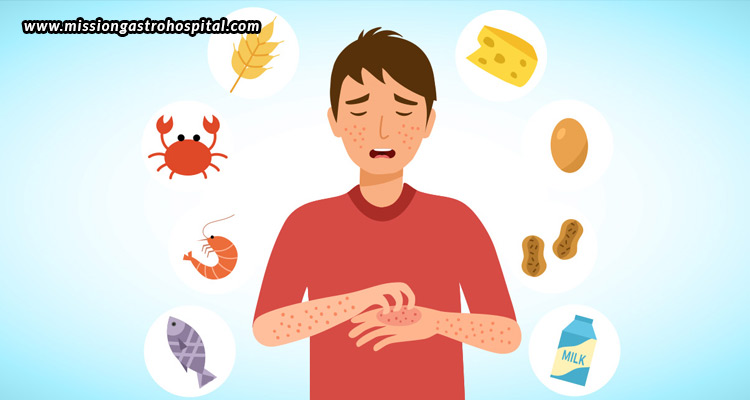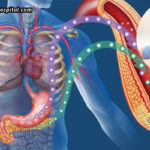Although food allergies and intolerances are on the rise, they are frequently misinterpreted and confused. Both can cause pain and have a detrimental impact on digestive health, but they are caused by different physiological processes and call for different approaches to treatment. Food intolerances usually cause symptoms like gas, bloating, and diarrhoea because it is difficult for the body to digest a particular meal. On the other hand, food allergies cause an immunological reaction that may be extremely serious and even fatal. It is crucial to comprehend the primary distinctions between these medical conditions and how the digestive system is impacted in order to successfully manage symptoms and preserve general health and well-being.
Understanding food intolerance
When a meal is difficult for the digestive system to handle, it can lead to food intolerance. However, food intolerance does not engage the immune system like allergies do. Rather, it often arises from the body’s incapacity to process a certain food. Lactose intolerance, gluten sensitivity, and intolerances to particular food additives or preservatives are common food intolerances.
Causes
The primary cause of food intolerance is deficiency or absence of certain enzymes required for the breakdown of particular dietary ingredients. For instance, the body’s inability to create enough lactase, an enzyme needed to break down the sugar lactose, which is present in milk and dairy products, might result in lactose intolerance. Similar to this, gluten sensitivity happens when the body cannot properly break down the protein present in wheat, barley, and rye, namely gluten. Chemical sensitivities and dietary intolerances can sometimes be related. For example, some individuals experience gastrointestinal distress when consuming naturally occurring compounds like histamines or dietary additives like sulphites.
Symptoms
Food intolerances can cause mild to severe symptoms that usually affect the digestive tract. Bloating, gas, diarrhoea, constipation, cramping or discomfort in the abdomen, and nausea are typical symptoms. These symptoms can usually manifest a few hours after the offending meal is consumed, and last for several hours or even days. Food intolerance often requires greater amounts of the food to elicit apparent symptoms, in contrast to food allergies, which can cause a reaction even with a tiny amount of the allergen.
Understanding food allergy
Food allergy involves the immune system. When a person who has a food allergy eats a particular food, their immune system misinterprets the food and launches an attack. This reaction frequently affects several body systems, including the digestive system, and can range in severity from moderate to fatal.
Causes
An excessive immune reaction to certain proteins present in food is what causes food allergies. Peanuts, almonds, walnuts, cashews, shellfish, fish, milk, eggs, soy, and wheat are among the most common allergens. An individual with a food allergy causes their immune system to create antibodies, mainly Immunoglobulin E (IgE), which in turn causes the production of substances such as histamine. The symptoms that accompany an allergic reaction are brought on by this response.
Symptoms
The intensity of food allergy symptoms can vary extensively, and they may affect various body parts. Common symptoms include rash or hives; swelling, especially around the lips, face, and throat; wheezing; abdominal discomfort; vomiting; diarrhoea; and anaphylaxis, which is a medical emergency that has to be treated right away with an injection of epinephrine and expert medical attention.
How food intolerances and food allergies affect the digestive system
Food intolerances
Food intolerances mostly impact the digestive system by interfering with the regular digesting process. A number of unpleasant digestive symptoms can arise from the body’s inability to adequately digest some meals.
- Lactose Intolerance: One of the most prevalent dietary intolerances, lactose intolerance affects millions of individuals globally. Lactose ferments and releases gas in the intestines if there is insufficient lactase enzyme to break it down. This results in symptoms such as diarrhoea, bloating, and discomfort in the abdomen.
- Gluten Sensitivity: Gluten sensitivity can result in digestive symptoms that resemble coeliac disease symptoms but do not trigger an immunological reaction. After ingesting gluten-containing meals, people with NCGS may feel gas, bloating, diarrhoea, and stomach cramps.
- FODMAP Intolerance: A class of carbohydrates known as fermentable oligo-, di-, mono-saccharides and polyols cause digestive distress in certain individuals. A number of fruits, vegetables, cereals, and dairy products are rich in fructooligosaccharides (FODMAPs). Those who are intolerant to these FODMAPS may have symptoms including gas, bloating, and diarrhoea after eating these foods.
Food allergies
Food allergies can damage several body systems, but the digestive tract is frequently the most affected. Food allergies can set off an immunological reaction that inflames the digestive tract, resulting in symptoms including diarrhoea, vomiting, and discomfort in the abdomen.
- Eosinophilic Esophagitis (EoE): The term “Eosinophilic Oesophagitis” (EoE) refers to a persistent allergy illness that affects the oesophagus. It is frequently brought on by food allergies and causes esophageal lining damage and inflammation. Chest discomfort, trouble swallowing, and food impaction are signs of endometriosis (EoE).
- Oral Allergy Syndrome: Oral allergy syndrome (OAS) is a disorder in which specific raw fruits, vegetables, and nuts induce throat and mouth allergic responses. This happens as a result of these foods’ proteins’ similarity to pollen proteins, which sets off a cross-reactive immunological response. OAS is characterized by tingling, itching, and swelling in the neck, lips, and mouth.
Diagnosing food intolerances and allergies
To manage symptoms and prevent triggers, a precise diagnosis of allergies and food intolerances is crucial. Specific testing, diets that exclude certain foods, and medical histories are frequently used in the diagnosing procedure.
Diagnosing food intolerances
Food intolerances can be difficult to diagnose since their symptoms are frequently delayed and have several possible causes. An elimination diet, in which suspected foods are progressively reintroduced after being removed from the diet for a while, is the most popular way for identifying food intolerances. Breath tests can occasionally be used to identify particular intolerances, such as lactose intolerance. After ingesting a lactose-containing beverage, these tests quantify the quantity of hydrogen in the breath because undigested lactose ferments in the stomach to create hydrogen.
Diagnosing food allergies
Oral food challenges, blood testing, and skin prick tests are commonly used to diagnose food allergies. In skin prick testing, a small quantity of the possible allergen is applied to the skin, and the skin is then pricked to check if a reaction takes place. Blood tests quantify the amounts of certain IgE antibodies produced in reaction to various allergens. The most reliable method of diagnosing a food allergy is thought to be an oral food challenge. The patient progressively takes higher doses of the suspected allergen under medical supervision to observe whether a reaction occurs.
Managing food intolerances and allergies
Once identified, monitoring dietary modifications, avoiding trigger foods, and anticipating possible reactions are all part of managing food intolerances and allergies.
Managing food intolerances
Reducing or eliminating problematic food intake is the main strategy for controlling food intolerances. For instance, those who are intolerant to lactose may select lactose-free dairy products or take supplements containing lactase enzymes prior to ingesting dairy products. Gluten-sensitive people can avoid wheat, barley, rye, and products produced from these grains by adhering to a gluten-free diet. A low-FODMAPS diet can help recognize and control trigger foods for those with FODMAPS sensitivity. In order to identify which high-FODMAP foods trigger symptoms, this diet calls for temporarily removing them from the diet before progressively returning them.
Managing food allergies
Strict avoidance of the allergic food is necessary for managing food allergies. Important actions for people with food allergies include closely reading food labels, enquiring about ingredients while dining out, and being mindful of the possibility of cross-contamination. It is important to always have an epinephrine auto-injector (such an EpiPen) on hand for people who are susceptible to severe allergic responses. In the event of anaphylaxis, this device can save lives by buying time for emergency medical attention to be sought.
Gastroenterologists are essential in the diagnosis and treatment of food allergies and intolerances. They help patients determine triggers and create individualized dietary regimens to reduce symptoms. For instance, the best gastroenterologists in Ahmedabad at Mission Gastro Hospital provide thorough assessments and individualized care plans to assist patients take control of their digestive health and live better lives. To differentiate intolerances from allergies and provide appropriate treatment and preventive measures, they employ specialized testing. Gastroenterologists can thus relieve digestive pain and enhance overall wellness.








